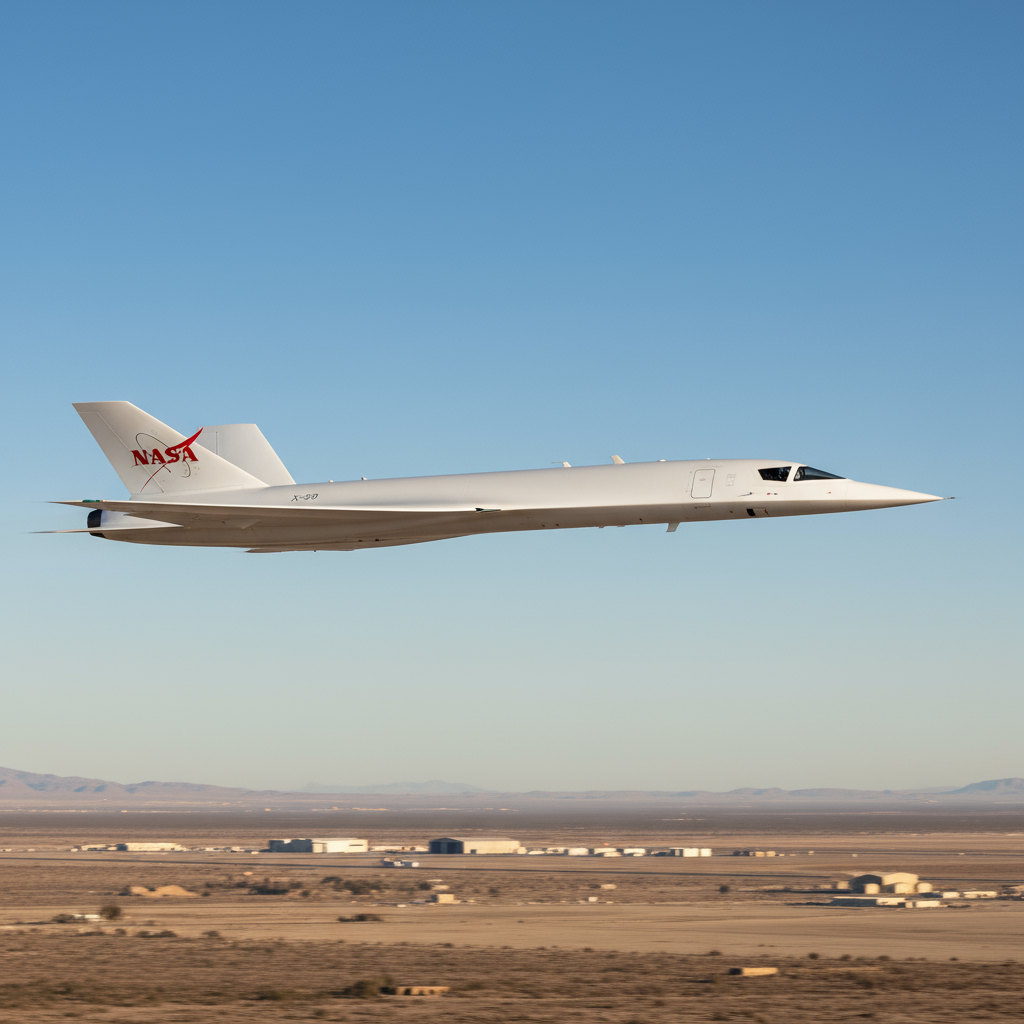Physical Address
304 North Cardinal St.
Dorchester Center, MA 02124
Physical Address
304 North Cardinal St.
Dorchester Center, MA 02124
Global aviation news tracker
Global aviation news tracker

NASA’s X-59 Quiet Supersonic demonstrator completed its maiden flight at Edwards AFB on October 28, 2025.
On October 28, 2025, NASA’s X-59 Quiet Supersonic Technology (QueSST) demonstrator completed its first flight at Edwards Air Force Base, California. The experimental X-59 jet aims to validate low‑boom supersonic flight over land — a technical milestone for future commercial supersonic travel and quieter overland operations.
The flight followed several postponed attempts and represents a major step in NASA’s aviation innovation portfolio. Engineers will now analyze telemetry and acoustic data from the sortie; those results will help regulators and industry evaluate whether relaxed overland supersonic rules are feasible without disturbing communities below.
QueSST (Quiet Supersonic Technology) and the X-59 demonstrator are designed to produce a much gentler sonic signature than legacy supersonic aircraft. Rather than a sharp sonic boom, the X-59 is intended to create a quieter, more tolerable ground perception — crucial for reopening routes that were closed to supersonic flight over populated areas.
NASA’s program will run a series of flight tests and community response studies. Data gathered from X-59 missions will feed international rulemaking and could influence how manufacturers design next‑generation supersonic airliners. While timelines for commercial adoption remain years away, this flight confirms the project is moving from ground test to airborne validation.
For Gen‑Z and millennial readers curious about travel evolution: think faster cross‑country flights with noise levels closer to today’s subsonic jets. The X-59 work is as much social science as it is aerospace engineering — combining acoustics, public perception surveys, and regulatory outreach to make supersonic travel practical and sustainable.